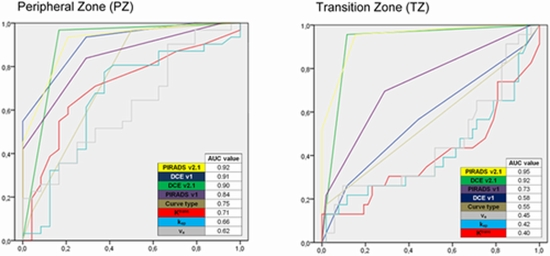Comparison of Qualitative (Time Intensity Curve Analysis), Semi-Quantitative, and Quantitative Multi-Phase 3T DCEMRI Parameters as Predictors of Malignancy in Adnexal

Objective: The present study aimed to compare the qualitative (time intensity curve analysis), the semi-quantitative and the quantitative multiphase 3T dynamic contrast-enhanced (DCE) MRI parameters as predictors of malignancy in adnexal masses. Materials and Methods: In this prospective study, women with an adnexal mass who were scheduled for surgical resection or were followed for more than one year period to confirm the benignity of their lesions, underwent multiphase 3T DCE-MRI. The qualitative (time intensity curve), semi-quantitative (SImax, SIrel, WIR) and quantitative (Ktrans, Kep, Vb) analyses were performed on DCE-MRI sequences and their predictive values were compared. Results: A total of 17 benign and 14 malignant lesions were included. According to the qualitative analysis, none of the lesions with Type I time intensity curves (TIC) were malignant and none of the masses with Type III TICs were benign. The accuracy of the quantitative parameters in detection of malignancy was found to be higher than that of semi-quantitative variables, particularly when calculated for a small ROI within the high signal area of the mass (sROI) rather than the largest ROI including the whole mass (lROI), and when inter-MRI variations were omitted using ratios. The Kep(tumor)/Kep(myometrium) ratio measured from sROI was the best parameter for differentiating a malignant lesion with a sensitivity of 100% and a specificity of 92.3%. Conclusion: We concluded that a Type I TIC confirms a benign lesion, and a type III TIC confirms the malignancy and further evaluation is not recommended for these lesions. So complementary quantitative analysis is only recommended for adnexal masses with type II TICs






ارسال به دوستان